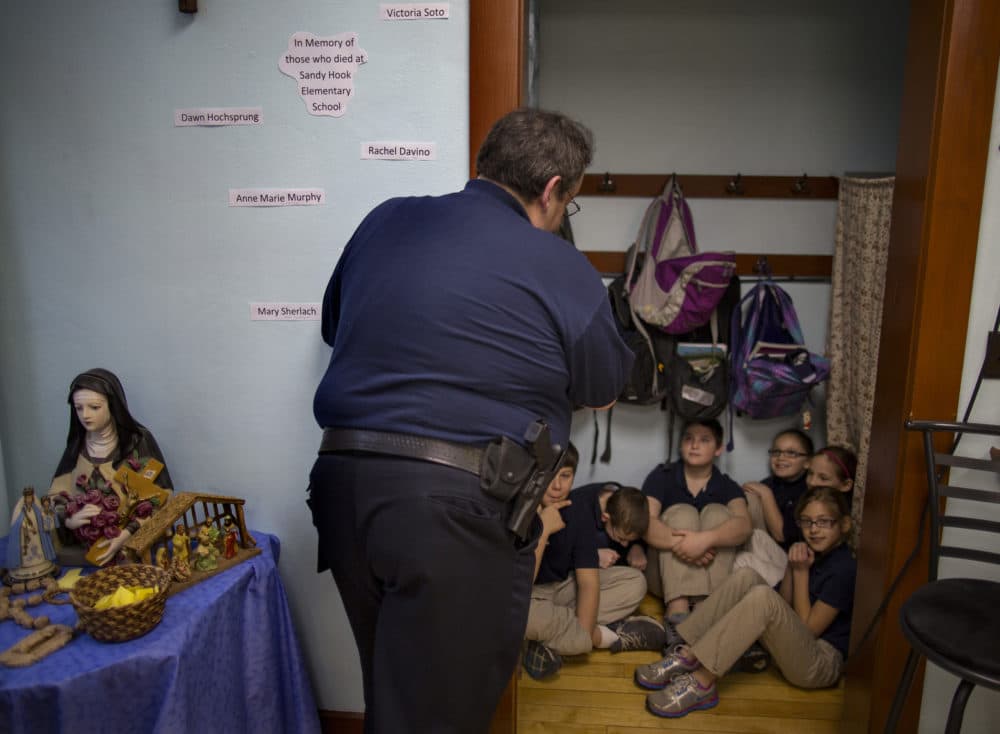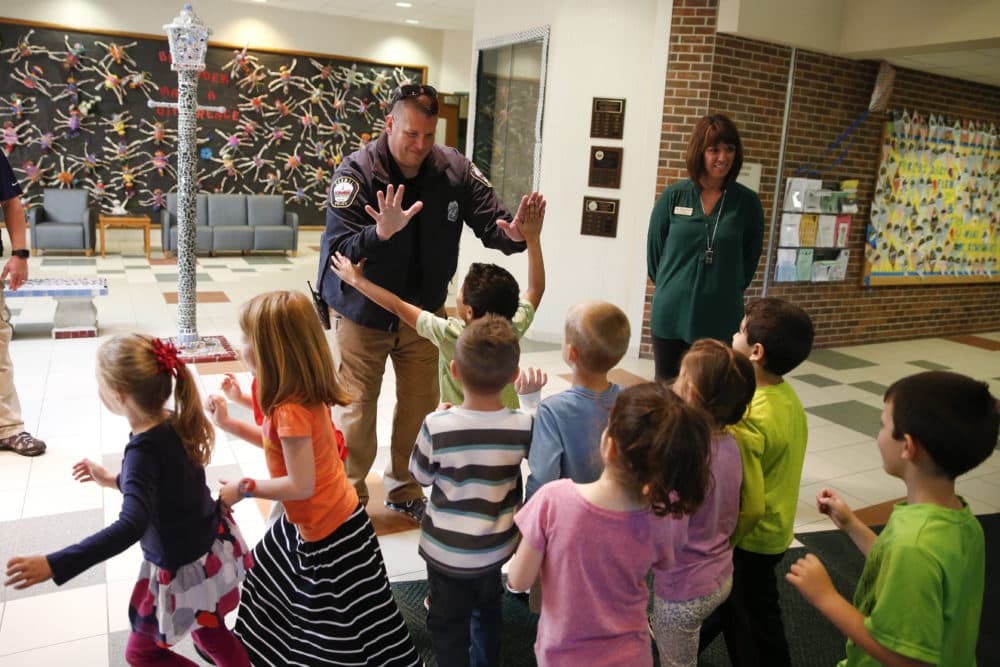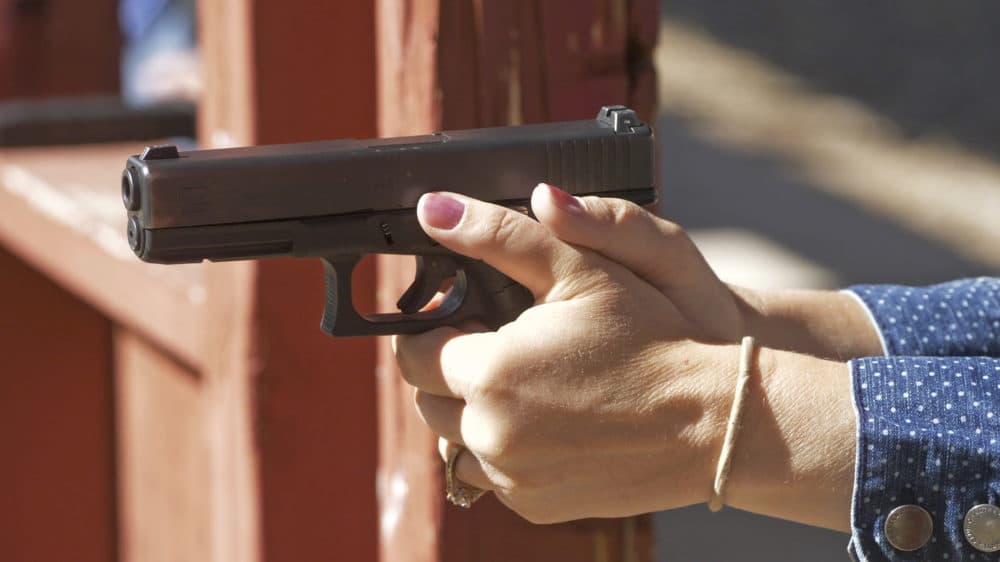Advertisement
Commentary
Lockdown Drills Are Bad For Children. They Also Create A False Sense Of Security

A generation of children is growing up with the pervasive fear of mass school shootings, while enduring mandated emergency drills that start as early as preschool and last through senior year of high school. Nearly 95% of schools now conduct lockdown and active shooter drills, including very realistic simulations.
As a child and adolescent psychiatrist, with decades of experience working in schools, I am convinced that they are doing more harm than good.
Emergency drills have become a necessary component of a child’s school experience. Young people begin learning in kindergarten how to evacuate the building in the event of a fire — but schools don’t set fires in hallways to prepare children for the worst. So why would we hire police officers to fire blanks in school hallways or show them video footage of past school shootings? Schools are understandably desperate to keep their students and staff safe, but there is a hard line between preparation and simulation.
Recent reporting in Slate examined what students really endure during lockdown and active shooter drills (there's also new research on the topic out this week, from Every Town for Gun Safety). Most procedures begin with the teacher locking the door and turning off the lights, while students crouch in the corner or hide in a closet. More involved simulations feature school officials “shooting” other school officials, and even teaching children how to fight off an active shooter using pencils, books, desks and other objects.
“We got to our places and got heavy things … there’s spheres and rectangles and triangles. I got the sphere because that’s the heaviest thing,” Colin, a first-grader from Towson, Maryland, told Slate.

But young children are not at a developmental stage where they can separate reality from fiction. To their young brains, the more frequently these simulations and drills happen, the more they will view the drills as confirmation that a school shooting is likely.
I spoke to Dr. Tara Stevens, a professor of educational psychology at Texas Tech University, who recommends that schools consider their unique contexts, as well as the fundamental difference between lockdowns and other types of drills.
“For years, children have regularly participated in fire and evacuation drills. Although these practices all address potentially lethal situations, lockdown drills are associated with especially egregious behavior,” she told me. “Explaining the need to prepare for the potential threat of fire or mechanical failure to children is one thing, explaining the need to prepare for an armed assailant is another.”
What schools are by and large failing to recognize is that young people are already at the epicenter of a mental health crisis. Academic pressure, coupled with new stressors like social media, has increased the rate of depression and anxiety in young people. Many children are already experiencing anxiety, depression and trauma reactions when they come into the classroom. Making children feel unsafe by sending the message that the unthinkable could happen — in one of the places where they spend most of their waking time — may further contribute to a child’s underlying mental distress.
The damage that results from putting young people through these kinds of drills ... furthers a culture of fear and suspicion.
Lockdown and active shooter drills are even riskier because they create a false sense of security. They also allow schools to hide behind these drills and other trendy (and damaging) methods, while abdicating their responsibility to take actions that could make a difference in preventing a tragedy. This might include developing tighter protocols, trainings and processes to assess threats and investing in critical mental health services for students.
There are reasons for staff and students to undergo emergency drills. But they ought to be executed with the supervision of and in collaboration with mental health professionals. That isn’t the current standard.
Fourteen million students go to schools staffed with police officers, and often zero mental health professionals to offer support. Mental health clinicians are crucial to working with schools on how to implement drills safely and in a developmentally appropriate way. These clinicians are the best resource for assisting schools in preventing school violence, preparing for a crisis and identifying students who may pose a threat — and ensuring those students access critical resources to change their trajectory and address the underlying problems.

While some school districts are focusing their school safety efforts on the hardening of schools, with metal detectors, increasing the presence of school resource officers and ALICE training, the Boston Public Schools (BPS) are doing something better. BPS is focused on improving access to quality behavioral health services. The district developed the Comprehensive Behavioral Health Model in an effort to create safe and supportive schools, that provide a continuum of mental health support from prevention and promotion of positive behavioral health to intensive behavioral health support.
Imagine cowering in your office at work during a 45-minute drill mandated by your employer. Or, participating in an active shooter drill each time you visited the movie theater. The damage that results from putting young people through these kinds of drills, or encouraging them to counter armed gunmen, furthers a culture of fear and suspicion. And it teaches them that the adults in the school can’t keep them safe.
Consider that students are often aware of the student(s) who planned a shooting. Creating a culture of trust that encourages those students to tell an adult what they know, in addition to a fair and safe process for evaluating threats, is a better use of school resources. This process has been rigorously tested.
Many of us can list the recent school shooting tragedies without much effort. It’s a fact that speaks to the fear and heartrending loss, and to our desire for a fast, effective solution. But we must also acknowledge that the frequency of these violent acts — in context with the overall statistics of students and schools — is very small. So why have we allowed lockdowns to take on a life of their own in schools and traumatize our young people in the process?
Let’s focus on making changes in school climate and procedures that we know can make a difference.
